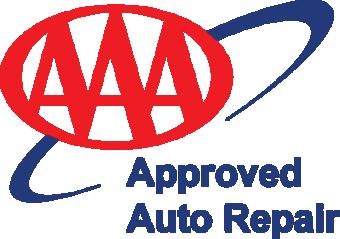On the ROAD
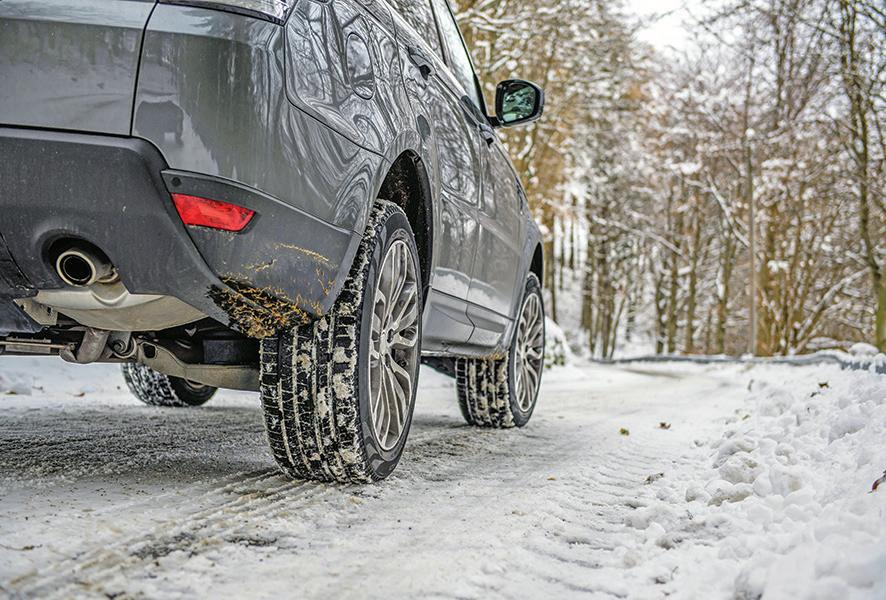


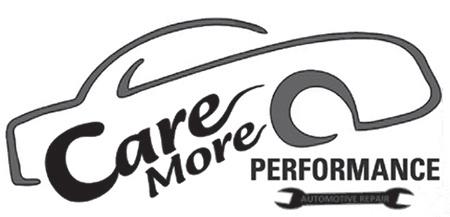







Few things can be as unsettling when behind the wheel as a sudden noise. Noises coming from a car can indicate a host of issues, and that’s one reason why such sounds tend to be so different. Quickly identifying what’s behind car noises can make for safer driving and potentially save drivers substantial amounts of money.
This noise can be loud and unsettling, but the good news is that it’s often a simple fix if addressed immediately.
The automotive insurance experts at Geico note that a noise that sounds like coins rattling around in a dryer is likely a loose lug nut in a hubcap. The lug nut might have become loose if a wheel was not tightened sufficiently after a recent maintenance appointment or even if drivers changed a tire on their own.
The longer drivers wait to address this, the more dangerous and costly it could
become, as it could have an effect on the wheel bearings. If addressed promptly, the damage is likely minimal.
A squealing noise at start-up is among the more annoying noises a driver can hear. This sound is often indicative of a worn or damaged serpentine belt, which connects the crankshaft to the alternator, power steering and additional components.

Thankfully, a worn down serpentine belt is a relatively inexpensive repair, though it’s important that it be addressed promptly. Squealing at start-up also could indicate a loose tensioner, which is designed to keep the serpentine belt at a certain tightness and tension, or wear and tear to the belt due to parking outside.
These issues can be addressed by readjusting or replacing the tensioner or replacing the serpentine belt, particularly if the part is old.
A knocking noise from the engine typically sounds like repeated tapping. The noise will often become louder as the vehicle accelerates. Various issues can be behind the knocking sound, and drivers should avoid self-diagnosing the problem, even if they’ve experienced it in the past with the same or a different vehicle.
Some drivers hear knocking because they’re using 87 octane fuel instead the of the high-performance and more expensive fuel the owner’s manual recommends (this could be a common problem in recent months given the meteoric rise in fuel prices). Another potential cause of engine knock could be problems with the pistons or crankshaft.
Regardless of what’s causing engine knocking, drivers are urged to take their vehicle to a mechanic promptly, as the cost of repairs is likely to rise the longer knocking goes untreated.
(METRO CREATIVE)
above: No one wants to hear noises coming from their vehicle. However, such noises should be addressed promptly, as the quickness of drivers’ responses could make the difference between a simple, less costly fix and a more time-consuming, expensive repair.
on the cover: Autumn has arrived and a drive down the area’s rustic roads is one of the popular activities for the season.
The cost of owning a vehicle has risen dramatically in recent years. Though prices at the gas pump have done much to stretch drivers’ budgets, supply short ages related to the COVID-19 pandemic hit motorists’ bottom lines even before the average gallon of gas reached unimaginable levels in mid-2022.
Though it’s certainly not an inexpensive time to own a vehicle, drivers can take solace knowing that these four basic vehicle maintenance tasks can be per formed at home and save them money.

Among the simplest DIY vehicle maintenance tasks, changing the air filter on a car or truck requires no special tools. Changing an air filter can be done in as little as 10 minutes, though novices might need more time until they get a feel for what’s under the hood. Vehicle owners’ manuals can indicate where the air filter is and how frequently it should be replaced.
Changing wiper blades is another simple DIY task that doesn’t require any special tools. Streaking is a telltale sign blades should be replaced, and some blades even start to come apart after excessive wear and tear.
The time it takes to perform this task could depend on how long it takes to remove the old blades, which can take time until DIYers get a handle on how to quickly remove them.
According to Bankrate.com, the average cost of a top service oil change at six nationwide franchises exceeded $75 in May 2022. But this relatively simple task can be performed at home rather easily. Drivers will need to invest in a ratchet, oil filter wrench, oil pan, and funnel, but that’s all they need to change their own vehicle oil. A jack will be necessary as well, but most new vehicles come with a jack.
Drivers can save on that costly fuel by keeping their tires properly inflated at all times. Poorly inflated tires make the engine work harder to get the vehicle down the road, and that extra work wastes fuel.
A portable tire inflator can read the pressure in each tire and drivers can then inflate the tires to the PSI recommended in their owner’s manual. A quality tire inflator can be purchased for less than $100.
As fall gives way to winter, drivers can take steps to keep their cars running strong and safe in the months ahead.
Summer and fall can stake their claim as road trip season, and even devoted drivers may admit that winter is generally a less desirable time to take to the open road.
The elements factor heavily into that reputation, as fewer hours of daylight, snow and ice are just some of the variables that can make it less enjoyable, and potentially more dangerous, to drive in winter.
In anticipation of adverse driving conditions, vehicle owners can take various steps to prepare their cars and trucks for winter.
Perhaps nothing is compromised more than visibility when driving in winter compared to other times of year. Snow makes it hard to see when driving, but fewer hours of daylight also can affect visibility. In fact, the Insurance Institute for Highway Safety reports that approximately half of all fatal crashes occur between 6 p.m. and 6 a.m., even though the number of drivers on the road during those hours is considerably lower than it is during the daytime.
The difficulty of driving at night is even more significant when wiper blades are not up to the task of keeping rain and snow off drivers’ windshields. Prior to winter, inspect wiper blades and upgrade them, if necessary. Streaks left on a windshield are a telltale sign that blades need to be replaced.
Winter tires may not be necessary in regions with relatively mild winters. However, drivers accustomed to winters
marked by heavy snowfall and/or icy roads should consider replacing their existing tires with winter tires. Many newer vehicles are now equipped with all-season tires, which the tire experts at Bridgestone note provide great performance but are not designed to handle extreme winter conditions like snow and ice.

Winter tires are specially designed to handle such conditions, making them a worthy investment for drivers who live in regions where it’s not unusual to encounter snow and ice throughout the winter.
Some vehicle manufacturers recommend different grades of oil depending on the range of temperatures a car or truck will be driven in.
The owner’s manual will likely indicate if the manufacturer recommends using a different type of engine oil in especially cold temperatures. Even if the manual does not include such a suggestion, drivers can seek the advice of a local mechanic.
Even if a vehicle is not due for a tuneup, it can be wise to have it looked over by a local mechanic before the arrival of harsh winter weather. A mechanic can check the radiator, hoses and other components that could be affected by especially cold weather in the months to come. If any issues are found, address them immediately. After all, it’s better to be proactive than leave yourself vulnerable to breakdowns or other issues once the mercury drops.
Novices may be overcome by nerves when attempting these jobs for the first time, but online tutorials can help them get a handle on any task that stretches their abilities to the limit. If the task seems too tall to tackle at home, take the vehicle to a trusted mechanic or dealership.
Any number of issues can affect drivers while on the road. Few issues may prove more disruptive than a flat tire. Flat tires can delay road trips and adversely affect commutes, all the while posing a significant safety hazard. Changing a flat tire is a valuable skill that all drivers should have in their repertoire, and this simple guide can help motorists hone their tire-changing skills.
Take stock of your tire-changing tools. Vehicles typically come with the tools drivers need to change a flat tire, especially if the car or truck was purchased from a dealership.
In addition to a spare tire, the tools drivers will need include a jack and a lug wrench. Tire wedges are not absolutely necessary, but when placed in front of or behind the tires, they can prevent rolling while changing the tire. A small flashlight kept in the glove compartment or center console storage also can be helpful, but drivers also can download a flashlight app on their smartphones to provide some extra illumination when changing a flat at night.
Turn on your hazard lights and find a safe place to pull over. The moment drivers recognize a tire is flat, they should turn on their hazard lights and find a safe place to pull over.
Avoid changing tires on narrow shoulders, as that leaves you and your passengers vulnerable to oncoming traffic. If you must, drive on the rim until you can find a safe place to pull over and change the tire. If possible, pull into an empty parking lot. Flat ground is ideal, as it can prevent the car from rolling while the tire is being changed.
Apply the parking brake upon stopping. The parking brake can reduce the risk of the vehicle rolling while the tire is being changed, so always apply it before getting out of the car.
Place the wheel wedges in the appropriate place. If you have wheel wedges, place them in front of the front tires when changing a rear tire and behind the rear tires when changing a front tire.
Some vehicles are equipped with hubcaps that cover the lug nuts. If that’s the case, then remove the hubcap before lifting the vehicle with the jack.
If that’s not the case, simply loosen the lug nuts, which may require a little extra effort since lug nuts tend to be on very tight. At this point, it’s easier to loosen the lug nuts than remove them entirely, which can be done once you’re ready to remove the tire.
Now it’s time to place the jack and ultimately lift the vehicle. The experts at Bridgestone Tire note that many modern vehicles now have areas of exposed metal on the bottom designed specifically for jack placement. Consult your owner’s
manual to find this spot, and then raise the vehicle until the tire is about six inches from the ground.
Once the tire is off the ground, remove the already loosened lug nuts, ideally placing them in a small receptacle or bag so they won’t roll away.
Using both hands, grip the tire by the treads and gently pull it off. Bridgestone recommends placing the tire on its side so it does not roll away.
When mounting the spare, gently push the tire on until the lug bolts can be seen through the rim.
One by one, place the lug nuts back on the bolts and tighten then by hand. Tighten them as much as possible so they’re able to hold the spare on as effectively as they
held the original tire in place.
There are several steps that should be followed when changing a flat tire, beginning with finding a safe place to pull over, turning on hazard lights, applying the parking brake and, if available, using wheel wedges to secure the vehicle.
Patiently lower the vehicle using the jack until the spare tire is resting on the ground but not with the full weight of the vehicle on it. At this point, Bridgestone recommends drivers use their full body weight to tighten the lug nuts once more before fully lowering the vehicle.
Once the vehicle has been lowered, some drivers may notice the hubcap does not fit over their spare. That’s alright, as it’s safe to drive without a hubcap covering the spare. In such instances, place the hubcap in the trunk when you’re putting back the jack, wrench and flat tire. But if the hubcap does fit over the spare, put it back on.
Check the pressure on the spare tire. A portable inflator can indicate the tire pressure in the spare and inflate it if need be. Drivers who cannot determine the pressure in the spare should drive slowly to the nearest service station and have the pressure checked or even the spare changed to a new tire, if possible.
(METRO CREATIVE)
As gas prices soared earlier this year, travelers and commuters were looking for ways to safeguard their wallets and drive as efficiently as possible. By changing their driving practices and choosing the right tires, drivers can save significant amounts of fuel and help reduce emissions from their vehicles.
In fact, making a few simple changes to driving style and car maintenance can help drivers save as much as half a gallon of gas per fill-up, or two-thirds of a gallon for every 300 miles (half a liter for every 100 kilometers) driven. These adjustments can also help minimize harmful CO2 emissions.
The first step toward sustainable, efficient driving is to choose the right tires in the first place. Tires with low rolling
resistance - the energy required for the tires to propel a car along the road - use less fuel and help cars lighten their carbon footprints.
“Rolling resistance has a huge impact on fuel consumption,” says Nokian Tyres Technical Customer Service Manager Matti Morri. “A tire with correct pressures and a low rolling resistance classification can save up to two-thirds of a gallon for every 300 miles (half a liter of fuel per 100 kilometers) when compared to the lowestperforming tires.”
To learn which tires have low rolling resistance, Morri recommends that drivers ask their tire dealer.
Avoiding idling, utilizing engine breaking, predicting traffic and preheating
vehicles in cold weather can lower fuel consumption by up to 20%, according to experts. Even a factor as trivial as steering angles can make a difference - drivers should avoid sudden sharp turns when possible.
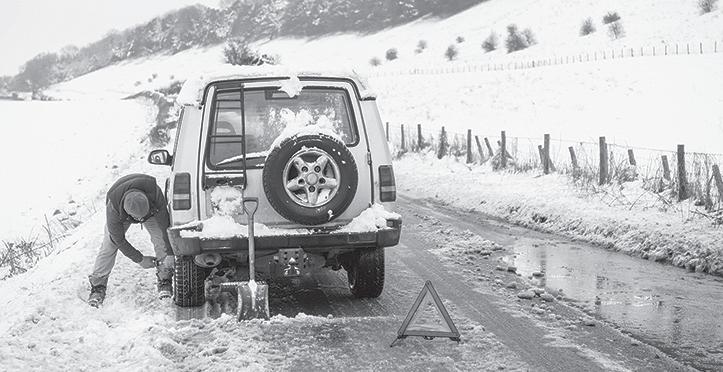
Maintaining correct tire pressure is also vital. Tires that aren’t inflated to their recommended pressure levels are less energy-efficient and more prone to blowouts and uneven wear. Morri recommends that drivers check their tire pressures at least once each month, and more frequently during seasons with fluctuating temperatures.
Tiremakers who prioritize ecofriendly products are also likely to help drivers save on fuel costs, since
rolling resistance and low emissions are closely linked. Drivers should look up the environmental records of the company that produced their tires. That will give a hint as to the efficiency - and environmental impact - of their tires.
Nokian Tyres was the first tire company to remove harmful higharomatic oils from its tire compounds, and it crafts tires at the only LEED v4 Silver-certified tire factory in the world. At the company’s North American factory in Dayton, Tennessee, solar energy helps power efficient production of tires that are built to help save energy themselves.
For more tire safety tips, visit NokianTires.com/ShopTalk.
For more information about the company’s commitment to ecofriendly practices and products, visit NokianTires.com/Sustainability.















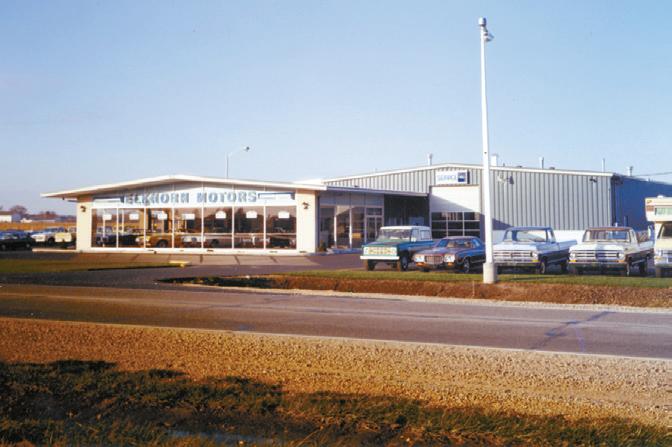

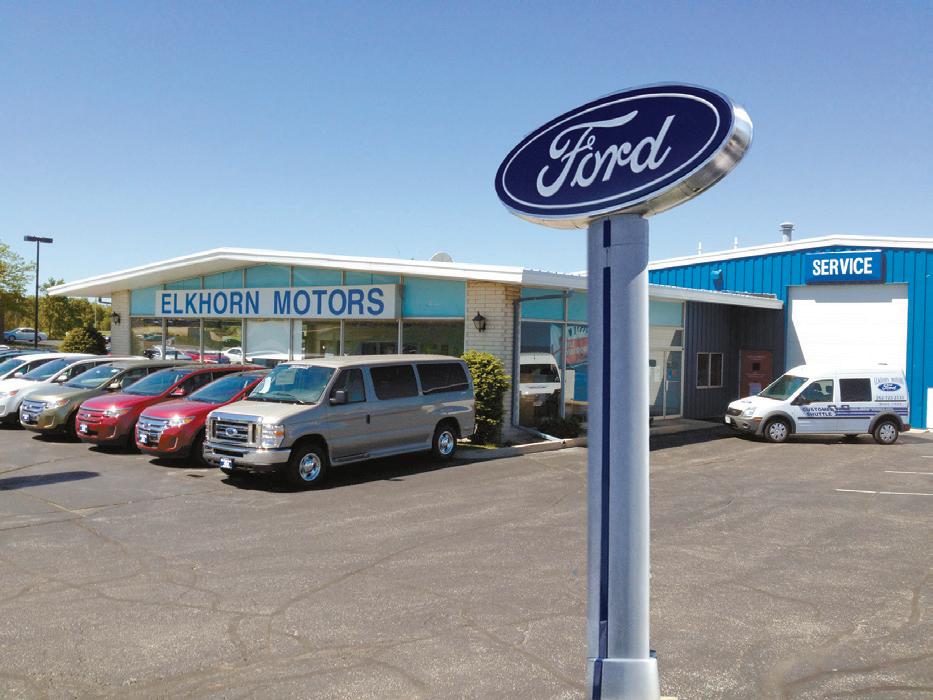

Fatal car crashes are on the rise, causing more than 35,000 deaths each year nationwide. In many cases, driver behavior and/or driver error contributes to the crash. Can self-driving cars save lives? Experts say the answer is yes, but point out that automated vehicle technology will need to evolve from where it is today.
In particular, developing systems that allow pedestrians and computer- or AI-operated vehicles to seamlessly communicate will be key to ensuring their broad adoption. 2020 National Highway Traffic Safety Administration data shows that pedestrian fatalities are up 3.9% compared to the previous year. At more than 6,000 deaths annually, this is the highest this figure has been since 1989.

This is why Toyota’s Collaborative Safety Research Center has been working with the Massachusetts Institute of Technology AgeLab and the University of Wisconsin-Madison Cognitive Systems Lab to study how drivers and pedestrians signal their intent to one another. The teams broke down hundreds of hours of driving videos and footage from vehicle and intersection cameras to isolate, document and define the physical language used by drivers and pedestrians.
The aim of the research is ultimately to inform the development of advanced vehicle safety and signaling features that perform similarly to existing drivers, as well as future automated vehicle technologies.

“Quantifying how, where and when interactions between drivers and pedestrians exchange social cues will help us create profiles that we can use to
simulate situations and adjust the vehicle behavior. If we can do that well, it will help with advanced automated vehicle development, and will allow vehicles to exhibit the right social cues to become more integrated into society,” said Dr. Josh Domeyer, senior researcher, CSRC.
Defining “vehicle communication” as much more than turn signals and brake lights, this research is identifying and investigating the number of small


behaviors that drivers perform in order to indicate their intent through movement. For instance, drivers typically begin stopping earlier and farther away for pedestrians than they would for a stop sign. Similarly, a driver will often slowly inch forward to indicate when they intend to proceed through the crosswalk. Such behaviors are important for safe and polite interactions and can be applied to automated vehicles in the future.
As researchers identify and plug the safety gaps created by new transportation technologies, they remain hopeful that the widespread adoption of automated vehicles will pave the way to safer roads and lives saved.
“For self-driving cars to become widespread and for people to become comfortable with the idea of using them, we’ll need to design complex and intricate systems that allow these vehicles to behave and interact with pedestrians in ways that are already common,” Domeyer said.
To learn more about CSRC’s research, visit amrd.toyota.com.



(STATEPOINT)


Driving puts a certain measure of wear and tear on a vehicle. Whether a vehicle is used primarily for commuting or as a vessel to take travelers to parts unknown, wear and tear is inevitable.
On the opposite end of the spectrum, individuals may not realize that failing to drive their vehicles regularly also can affect performance. Here’s a closer look at what can happen when vehicles sit idle for lengthy periods of time.
The battery in a vehicle is still being used even if the car isn’t running. Batteries power various components in a car, such as the vehicle computer, phone chargers and more. If the engine does not turn over and help to recharge the battery, the battery will eventually die. People who drive infrequently may want to consider a trickle charger that’s plugged in during periods of non-use.
Dry tire rot is deterioration that sets into the rubber. The material dries out and becomes brittle, causing splits and cracks to form. Driving with tire rot can cause tires to deflate.
There is still plenty of metal in modern vehicles. A vehicle that has been exposed to salt or rain or one that is stored in a moist climate can be susceptible to undercarriage or engine rust. This may cause damage that’s not easily repaired.
A vehicle parked in one location for a long time could be a target for bird droppings, fallen berries, sap, and other substances that are potentially harmful to the paint job. Leaving the car or truck out in the sun also means UV rays can cause clear coat over the paint to oxidize and begin to fail, which can produce blotchy or peeling spots.
When vehicles are left to sit, corrosion could build up on the rotors and the brake pads may become less flexible. Moisture also may seep into brake lines, causing issues with pressurization of brake fluid. Each of these factors adds up to brakes that do not work properly – which is a big safety hazard.
When tires are not used frequently, the weight of the car can continually put pressure on the same parts of the tires, leading to flat spots. Tires also can lose pressure if they sit too long.
Oil and other fluids may lose efficacy. Various fluids can go stale in a vehicle if it isn’t regularly driven. Gasoline also may develop condensation, which can reduce efficiency and performance. Taking short trips helps avoid this issue.
(METRO
Defensive driving can prevent accidents and save lives. Defensive driving also could save drivers money on car insurance. With so much to gain from driving defensively, a refresher on the principles of defensive driving could benefit drivers of all ages.
Drivers undoubtedly have heard the term “defensive driving,” but may not fully understand what it means. In the simplest sense, defensive driving is an approach to driving that focuses on anticipating and reacting to potential hazards when behind the wheel.
Defensive drivers apply various skills and techniques to defend against potential accidents caused by reckless drivers.
Anyone can benefit from a defensive driving course. New drivers may benefit the most because it gives them a strong foundation for safe driving. A defensive driving course also may help drivers remove tickets from their driving record or remove points from a license for first-time offenders, indicates DefensiveDriving.org.
Defensive driving courses also may help prevent high insurance premiums or rate hikes following a ticket or accident.
Defensive driving courses differ, but the following are some of the basic principles of driving defensively.
• Be alert to surroundings. This is one of the most important aspects of defensive driving. Paying attention to the road and
avoiding distractions prevents accidents. The National Highway Traffic Safety Administration says removing one’s eyes from the road for five seconds while driving 55 miles per hour is like driving the length of a football field with your eyes closed. Drivers should scan the horizon, check blind spots and know what’s going on around their vehicles.
• Employ the three-second rule. Leave
sufficient distance between your vehicle and the one in front of you. A driver should pass a stationary object on the side of the road no earlier than three seconds after the vehicle driving ahead of them has passed the object.
• Don’t drive impaired. Drugs, alcohol and fatigue can adversely affect performance behind the wheel. Precise movements, fast-thinking and focus are adversely affected when driving tired or under the influence.
• Leave yourself an out. Figure out a way to avoid collisions at all times while driving. This includes not being boxed in by other drivers or barriers. This can be achieved by leaving significant distance between your vehicle and the one in front of you, by obeying the speed limit and ensuring there’s a lane to move into that’s free and clear.
• Avoid bad drivers. Steer clear of drivers who are acting recklessly, and give them a wide berth. Move over, slow down and keep an eye on these drivers to avoid a collision. Similarly, move over for tailgaters and avoid succumbing to road rage.
• Be courteous and follow the rules. Respect the rules of the road that you learned in drivers’ education classes. This includes wearing a seat belt, obeying the speed limit, slowing down for bad weather, and giving over the right of way to a reckless driver if it means staying safe.


Buying a pre-owned vehicle can be a cost-effective way to get a reliable, affordable car or truck.
The moment a new car leaves a lot, it starts do depreciate in value, according to U.S. News & World Report. After the first few years of ownership, the vehicle has lost a significant amount of its value. By buying used, consumers avoid that steep depreciation.
Pre-owned vehicle ownership is popular, as Americans buy 50 million used cars a year, according to Paul Taylor, the chief economist for the National Automobile Dealers Association.
Buying a pre-owned vehicle takes a little more research and work than buying new, but that time spent can be worth it. Here’s how to navigate purchasing a used car or truck.

Utilize a car pricing tool such as Kelley Blue Book or Edmunds to gauge the value of a used vehicle. This way you’ll have an understanding of the range of prices that are acceptable for a vehicle of a certain age, make and condition.
Many dealerships stand behind vehicles of a certain age and condition. Often called certified pre-owned vehicles, these tend to be lease turn-ins that are between three and four years of age and may still be under full or partial warranties.

Certified pre-owned vehicles remove some of the worry associated with buying used since warranties will cover the repair costs of certain parts,
such as the engine and drivetrain. Plus, the dealerships’ mechanics have given the vehicles health checks before listing them for sale, certifying their condition and mileage.
Many manufacturers are offering financing for certified pre-owned vehicles that are as competitive as those for new cars. Shopping around for rates, both at dealerships and other lenders, can make pre-owned vehicles even more affordable.
Buying from a private seller is a bit riskier than utilizing a dealership. That’s because the due diligence falls the buyer. Ask for a vehicle history report (commonly known as the “CARFAX¨) for any vehicle you’re considering, even if it means paying for the report. The report will list any accidents and other red flags. If a seller refuses to offer the report, pass on the deal.
Another safeguard is to have your own mechanic look over the vehicle before purchase. A professional will know what to look for in terms of unusual wear and tear on a vehicle that may not be evident to drivers.
Before making any decisions, develop a used car budget that takes into consideration the total cost of owning the vehicle. This can include the monthly payment, interest, insurance, maintenance costs and fuel.
(METRO CREATIVE)
Drivers in the market for a new or pre-owned vehicle over the last couple of years likely discovered that the process of buying a car or truck is as difficult as ever.
Prior to and during the COVID-19 pandemic, factory closures, supply chain issues, semiconductor chip shortages, and a bevy of other complications led to fewer vehicles on lots and much higher sticker prices on cars that were on the lot. That has caused people who are on strict budgets to reevaluate priorities and timelines.
According to Ivan Drury, Edmunds’ senior manager of insights, consumers can’t expect to walk into the dealership thinking they’re going to find incentives or bargains right now. Plus, they may not even be able to see or test drive a vehicle they want. That reality makes now a great time for car shoppers to rethink their buying strategies.
Tyson Jominy, Vice President of Data and Analytics at J.D. Power, says vehicle inventory in November 2021 reached record lows. Although there has been some improvement in 2022, consumers may still have to make some concessions if they need a vehicle promptly.
SUVs and pick-up trucks have been some of the hardest inventory to find. Considering a sedan or even a compact car may be the only way to get a new vehicle quickly.
Those with the luxury of time may continue to wait for inventory to increase and prices to decrease. Tech experts,
including Intel CEO Pat Gelsinger, expect chip shortages to persist into 2024. If a person’s vehicle is in good condition, it may be more economical to hold on to it a little longer than planned and do the maintenance required.
It may take some investigation, but there are certain dealerships that are not adding astronomical markups, also called “market adjustments,” to the costs of their vehicles. These dealers may advertise online and car buyers can always call ahead to ask about markups.
Lots filled with a variety of makes, models, colors and features are no longer the norm. Shoppers will be afforded more flexibility in price if they’re willing to take what’s available.
The Federal Reserve increased interest rates in the middle of 2022 and it initially planned to increase rates a few more times throughout the year. People, particularly those who do not have the best credit, can do themselves a favor and shop around at different banks for the best loan rates – the loan may be less costly than what’s offered through the dealership.
Also, certified pre-owned vehicles tend to come with promotional interest rates that are lower than the average APR, which makes them a viable alternative.
Modern vehicles utilize various technologies to ensure drivers remain as safe as possible behind the wheel. Technology also can alert drivers when their cars are in need of examination, and such is the case when the often dreaded “check engine” light comes on.
While a check engine indicator is seldom good news, it may not mean that expensive repairs are right around the corner. The following are six reasons why check engine lights come on and how to remedy these situations.
A faulty gas cap is one of the reasons a check engine light might turn on. A cap that is not tightly closed or one that is poorly sealed enables vapors to escape, which can trigger the light. Opening the gas cap and then resealing it tightly may help; otherwise, a replacement cap may be necessary.
Sometimes there is nothing wrong with the engine or other components, but the light sensor itself. The check engine light might come on because its sensor is corroded or not working properly.
The oxygen sensor sends data to the vehicle’s computer, which it uses to create the right mix of air and fuel to enter the engine’s cylinders. The check engine light may come on when the sensor fails or registers a problem with the fuel/air mix.
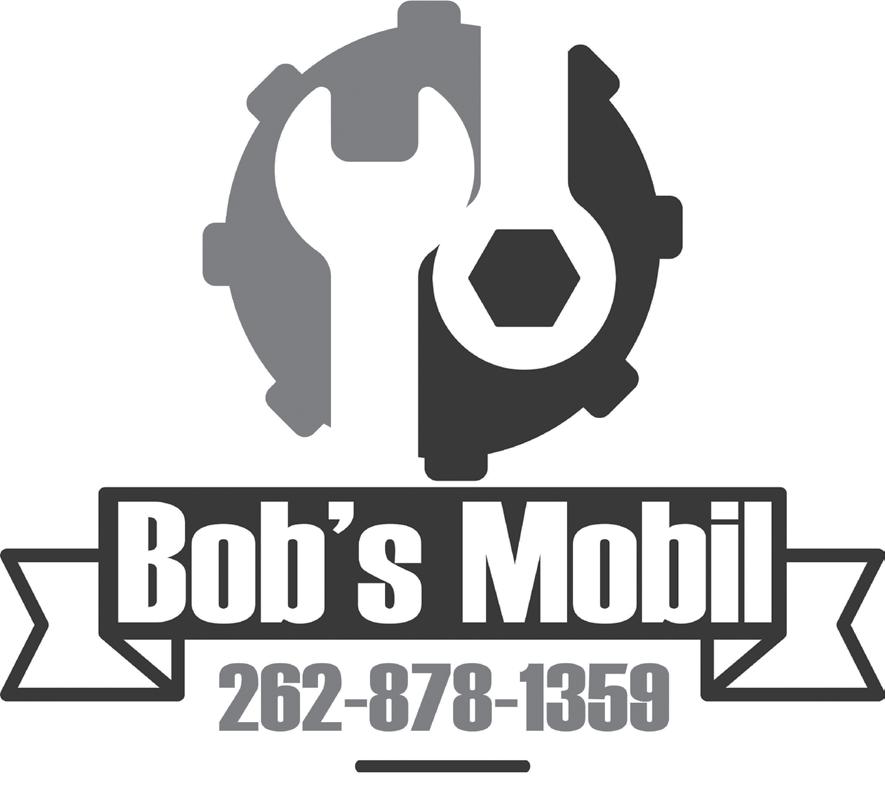
A check engine light may come on to warn drivers it is time to replace spark plugs and/or ignition coils. According to DigitalTrends, ignition coils generate the electricity needed for spark plugs to ignite the fuel and air mix in the cylinders. Worn coils or fouled plugs can cause any number of issues, including engine misfire.

The catalytic converter heats up hydrocarbons and other emissions so that they turn into carbon dioxide and water vapor to help protect the environment, offers AutoZone. The converter usually does not fail on its own, but a mechanic can help diagnose what might cause the failure.
Vehicles are large computerized devices with an array of sensors and modules that run powertrains. Any issues with these sensors, networks or modules can trigger the check engine light.
Depending on the make and model of a vehicle, a check engine light may require less urgency than a flashing light. It always helps to consult with the owner’s manual to help determine issues.
Automotive retail stores and mechanics can connect the car’s computer to diagnostic equipment that will issue a diagnostic trouble code that can serve as a starting point to address check engine light issues.


If you think you’ve been seeing more plug-in cars on the road or hybrid vehicles in the carpool lane lately, you are not imagining it. A recent Deloitte report found that high fuel prices, combined with lower maintenance costs, has electric vehicle (EV) interest poised for continued growth among U.S. consumers.
Hankook Tire’s latest Gauge Index took a closer look at what’s driving interest in EV and hybrid vehicles:
Perhaps it is the obvious answer, but the high prices at the pump are among the biggest incentives for those looking to make the switch from a traditional gaspowered or internal combustion engine (ICE) vehicle to a hybrid or EV. According to the Gauge, most Americans (51%) find spending less money on gas as the most appealing benefit of EVs.
Other drivers are more environmentally minded in their decisions: nearly a quarter (24%) say the environmental impact of an EV is the most appealing reason for them to switch. According to the EPA, electric vehicles typically have a smaller carbon footprint than gasoline cars, even when accounting for the electricity required to charge them.
With all of the benefits that EVs and hybrids offer for those seeking to lower costs and their overall environmental footprint, it’s no wonder that the Gauge found 60% of drivers either currently own or lease a hybrid or EV, or plan to in the future.
Technology advancements have given EVs a leg up when it comes to distance - though many drivers (51%) still underestimate how far one can travel on a full charge. On average, an EV can go about 250 miles on a single charge. And considering the average household
travels approximately 50 miles on a typical day, according to the Federal highway Administration’s latest National Household Travel Survey, that makes EVs a strong option for most.
There are specific maintenance
considerations for EVs, but the benefit for many is that maintenance typically costs less than for an ICE vehicle - up to 30% lower!
However, Hankook found that many drivers will need to brush up on what those particular maintenance considerations are before they make the switch - only 29% know that EVs have different maintenance requirements to their gaspowered counterparts. Similarly, only 22% of drivers know that if you are aiming for optimum performance, EVs should use tires designed specifically for EVs. (On the bright side, 82% are aware that there is a difference between a hybrid and an EV.)
The growing popularity of EVs also leads to growing options - whether you prefer to drive a sedan, coupe, SUV or light truck, there’s an EV option for you.
The EPA notes that there are currently more than 50 plug-in hybrid and electric vehicle models on the market, with vehicle class options likely to continue expanding in coming years. So for those seeking alternate options, there are plenty to take into consideration.
And here’s a fun fact for those considering a personalized license plate for their EV - Hankook found the two most popular vanity plates for EVs are CHARGEME (26%) and OUTOFGAS (24%).
(BPT)
Nearly 35 million American drivers will be on the road this summer and while EV infrastructure is still growing, the burgeoning part of the population of first-time EV owners may have to take additional steps to ensure a successful road trip.
“It cannot be understated that to successfully travel in an EV, you must plan out your trip,” said Kevin Quinn, vice president of auto claims at Mercury Insurance. “Mapping out stops around EV charging stations and taking the time to make sure your car is prepared by carefully checking your vehicle’s components may help you avoid potential headaches.”
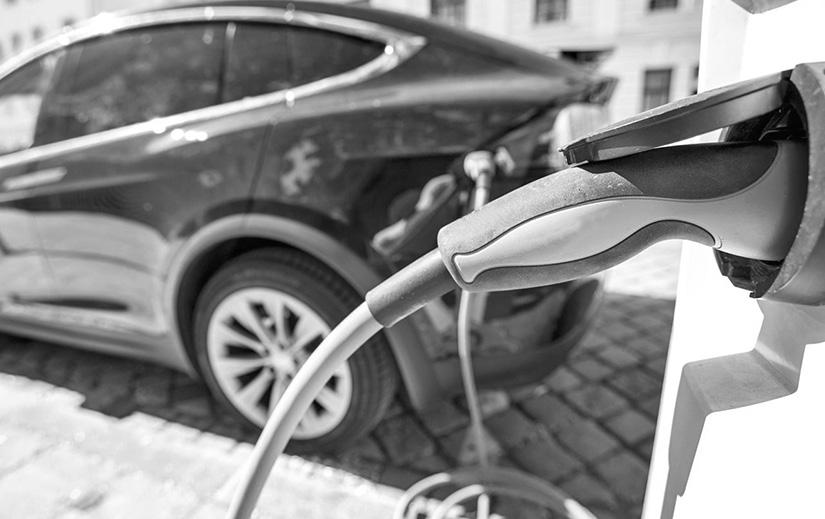
Mercury Insurance offers drivers these additional tips to help them along their holiday travels.
Know your type of charger. With the exception of Tesla, which are equipped with an adapter to fit non-Tesla chargers, you can charge your car at almost any charging station as long as it is compatible with your vehicle plug type and you have the right tap card or mobile app to access that particular station.
It’s also important to know the different levels of public chargers available and how fast they’ll charge your vehicle:
Level 1 chargers are often free but are the slowest to charge. They can take up to 24 hours to power your vehicle completely.
Level 2 chargers, found at most charging stations and RV parks, are quicker and can fully charge your vehicle in four to eight hours.
Level 3 chargers can get you back on the
road the quickest with a full battery in about an hour, but are also the most expensive. Even though the cost can vary depending on where you are and what type of charger you use, powering up will still be cheaper than gas.
As a general rule, it’s best to plan a recharge when your car is at 20%. It’s better for your car’s battery and can give you some time to get through traffic and to the nearest charging station.
Sites like PlugShare, EVgo, Electrify America and Tesla offer mobile apps you can download to help organize your trip around available charging units. Signing up beforehand allows you to program the type of EV you drive in order to access chargers compatible with your vehicle. Many popular tourist attractions and hotels also offer complimentary access to charging stations for guests.
If you’re looking to travel to a national park, know that many RV parks offer Level 2 chargers. It’s always best to review campground policies along with charging information from EV charging apps to verify that the campground has the type of charger you need and that they will allow you to charge your car on their property.
Road trips have always had a sense of adventure to them and sometimes unexpected situations arise in the form of bad weather or road delays. Have a backup plan in place before you set out on your journey.
Map out alternative routes with charging stations in case there is a change to your itinerary.
Being prepared and allowing for flexibility can make for a more positive EV road trip experience.
Before heading out on the road, make sure your insurance policy offers roadside assistance for your EV. Some roadside assistance plans have tow trucks that are

equipped with portable chargers or offer a flat-bed truck to tow your vehicle to a charging station. Some EVs may need a flatbed truck to tow them as they are not equipped to be towed like gas-powered vehicles.
“When contacting roadside assistance or a local towing company, tell them you are traveling in an electric vehicle,” said Quinn.
“Any issues that require more than a quick charge, like battery or tire problems, may require your vehicle to be towed to a facility for further work.” (BPT)
As EV infrastructure improves and electric vehicles become more commonplace, there will be more options for charging. For now, take the time to calculate the number of miles you’ll need to drive between charging and what type of mileage range your car has.



